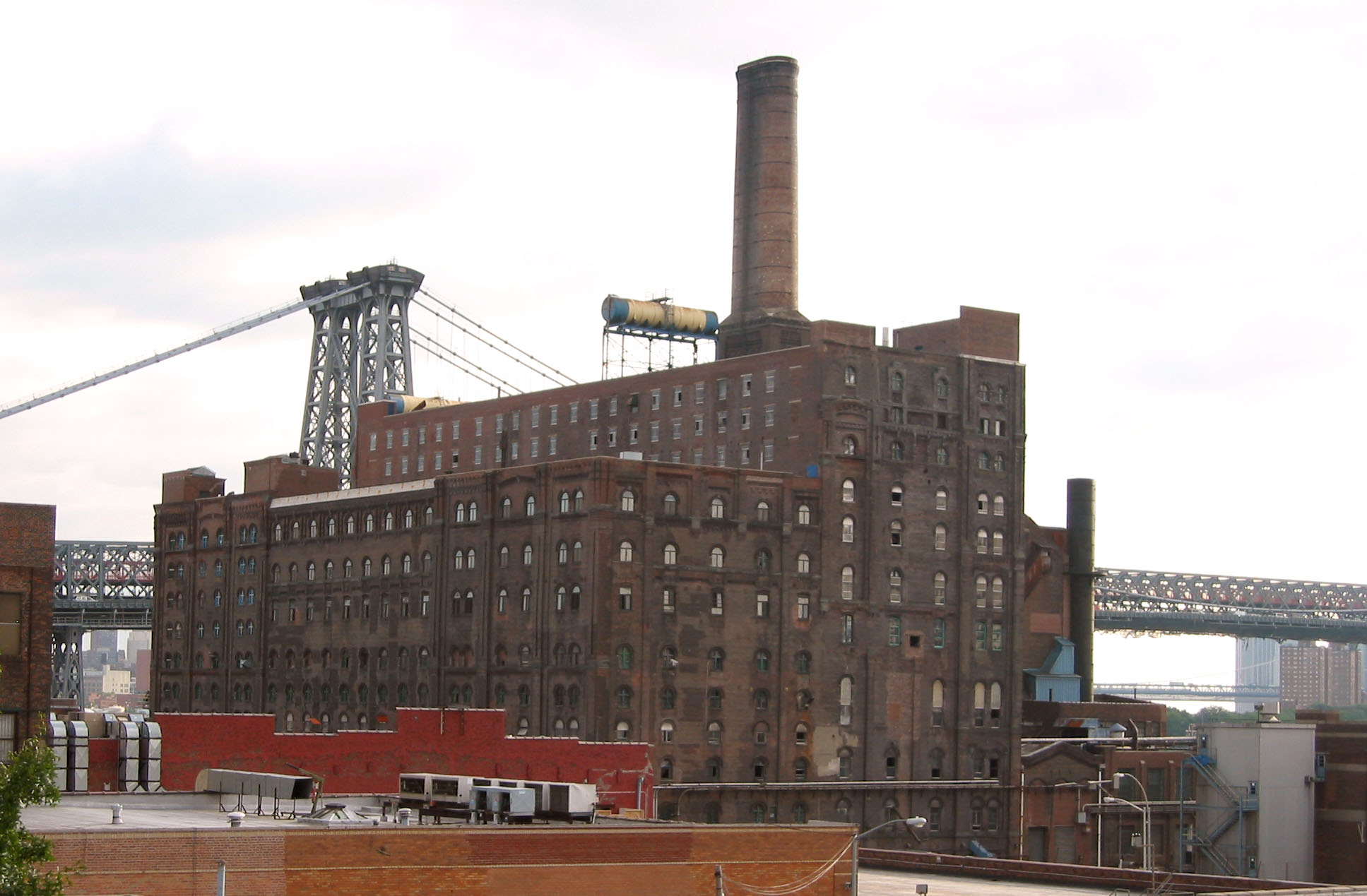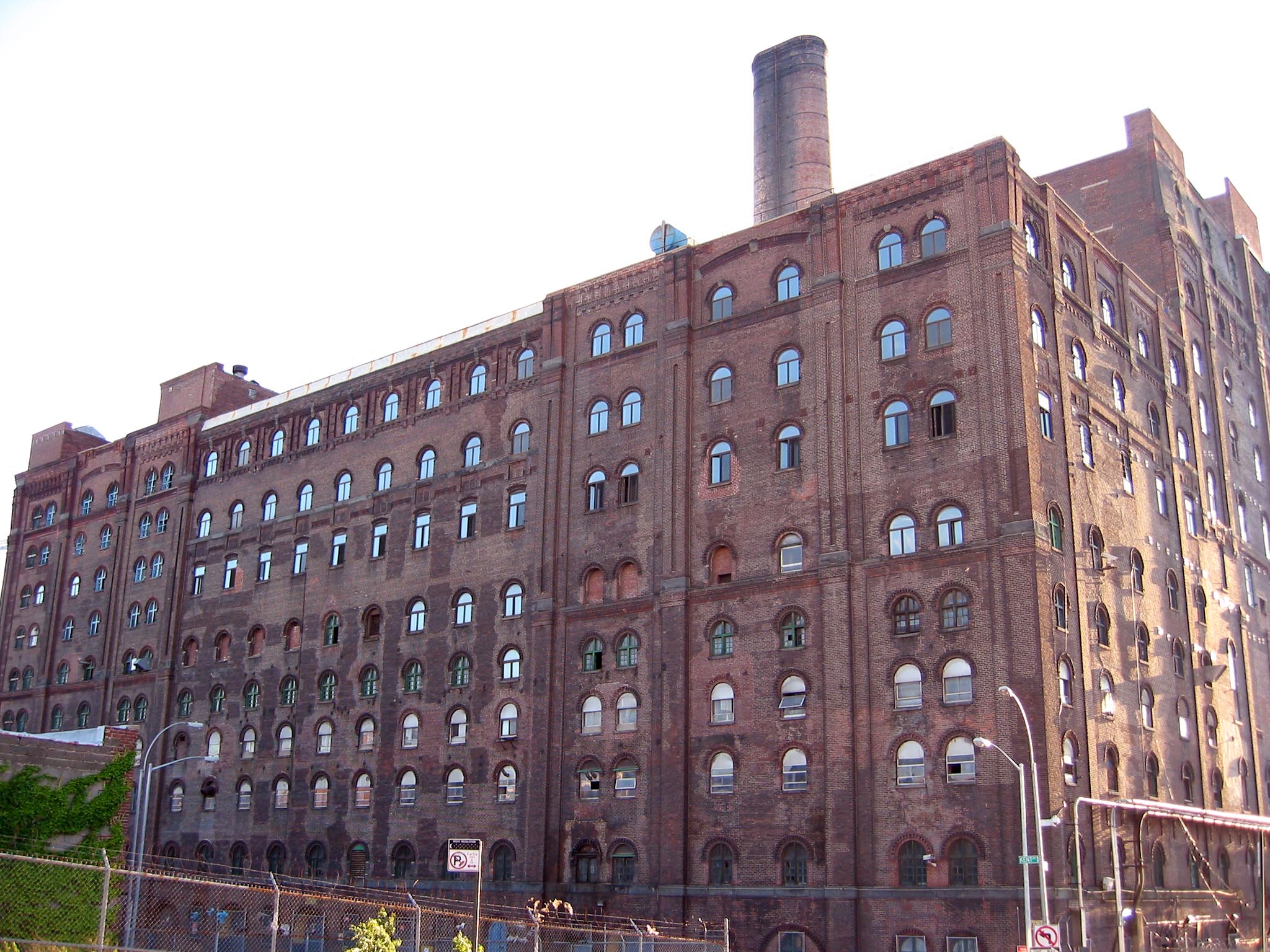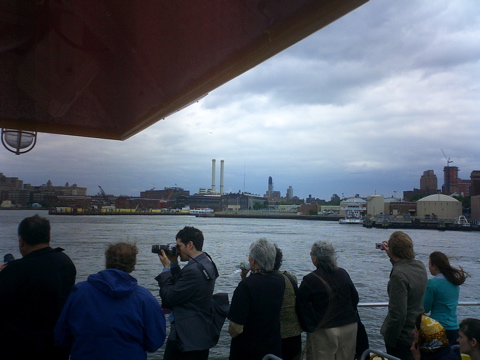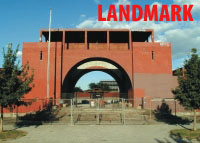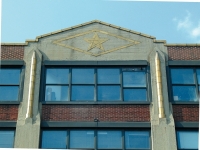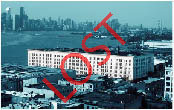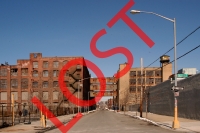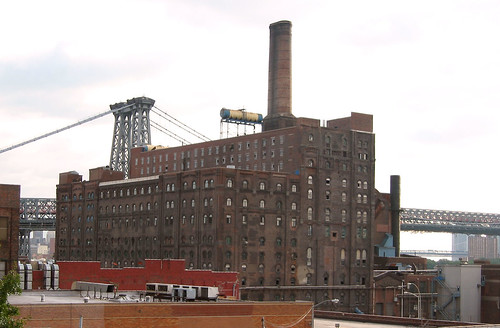
Domino Sugar Refinery
Processing House
Photo: WPA
The Waterfront Preservation Alliance of Greenpoint & Williamsburg is pleased to announce that for the second time in as many months, the New York City Landmarks Preservation Commission has calendared a significant north Brooklyn industrial site for designation as a New York City Landmark. This morning, LPC voted unanimously to designate consider for designation the processing house of the Domino Sugar refinery in Williamsburg Brooklyn. The processing house, which dates to 1883, is an icon of the Brooklyn waterfront. The structure housed three separate sugar refining operations in one vertically-integrated factory: the Filter House; the Pan House; and the Finishing House. The full operation of the plant is described in WPA's nomination to LPC, located here.
The designation calendaring of the Domino Refinery comes after a petition and postcard campaign coordinated by WPA and the Municipal Art Society. Thousands of neighborhood and city residents have written to LPC in support of this designation. WPA spokesperson Alice Rich, noting that this action is an important first step towards landmarking Domino, stated "landmarking means that the rich history of Williamsburg's past has a place in its future. Landmarking says that these buildings are significant and should be retained no matter what the future use of the site may be."
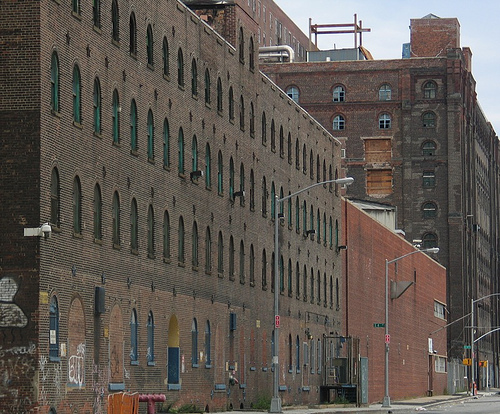
The Adant House (foreground).
Photo: WPA.
The calendaring focuses on only one building three buildings* in a six-block site located on either side of Kent Avenue between Grand Street and the Williamsburg Bridge. While much of the remainder of the site consists of more recent structures of lesser architectural value, the calendaring omits the Adant House at South 5th Street, an 1883 building in which sugar cubes were manufactured, and a smaller 1883 power house located adjacent to the processing plant. WPA has advocated for the preservation of these two structures, and will continue to do so. The designation of the processing plant would also free the remainder of the site from any meaningful design review, a situation which WPA has opposed.
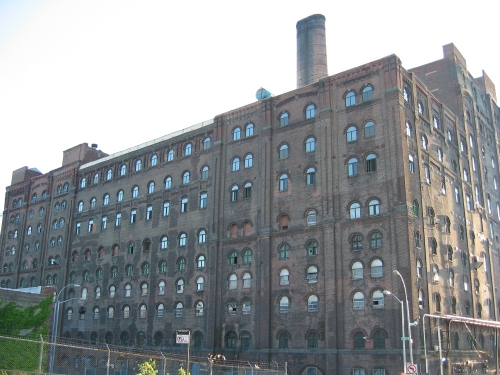
Domino Sugar Refinery
Processing House
Photo: WPA
The processing plant was constructed in 1883 after a catastrophic fire destroyed the original 1854 Havemeyers & Elder refinery. The 1883 refinery was at one point the largest sugar refinery in the world. The Domino Refinery was active until 2004, when the plant was shut down and its operations moved to Yonkers, NY. It remains one of the largest industrial buildings on Brooklyn's once-thriving East River waterfront. After the plant closed, the property was acquired by the CPC Resources, a subsidiary of the Community Preservation Corporation. CPCR is expected to file soon to have the property rezoned for residential use. Last month, LPC voted to calendar the Eberhard Faber Pencil Factory in Greenpoint for a designation hearing.
In addition to MAS and the Historic Districts Council, the designation of the Domino refinery has also been supported by Councilmember David Yassky, who informed WPA that he wrote to LPC in September, 2006 in support of designation.
*UPDATE: As noted in the comments, there is some confusion about exactly what and how many buildings are up for designation. The building being considered is the Processing House, shown in photos 1 and 3 in this post. The processing house is actually three separate structures: the Filter House, which is the 12-story portion nearest the river; the Pan House which is the northern 2/3 of the 10-story portion along Kent Avenue; and the Pan House, which is the southern 1/3 of the 10-story portion along Kent Avenue. We have always referred to this conglomeration, which includes the large smokestack but nothing to the west of it, as one building. Landmarks has taken to calling this three buildings, which is fine. By that math, though, there are five buildings on the Domino site that were constructed in 1883, and Landmarks is only considering three of these. WPA continues to believe that the remaining two buildings, the Adant House (photo 2, above) and the Power House are significant, and that both could be preserved and incorporated into a reuse of the site. But mostly, we're excited that the Processing House (or the Filter, Finishing and Pan Houses) is (are) finally up for Landmark consideration. Clear enough? (Actually, it should be clearer if you look at our
site plan in our
Domino history post.)
UPDATE #2: We were imprecise in some of our wording above; LPC has calendared the Processing House. That means that sometime in the (near) future, LPC will hold a public hearing at which the Commissioners will consider whether or not to designate the structure. Calendaring is the first step in the process, but Domino is by no means a City landmark (yet).
